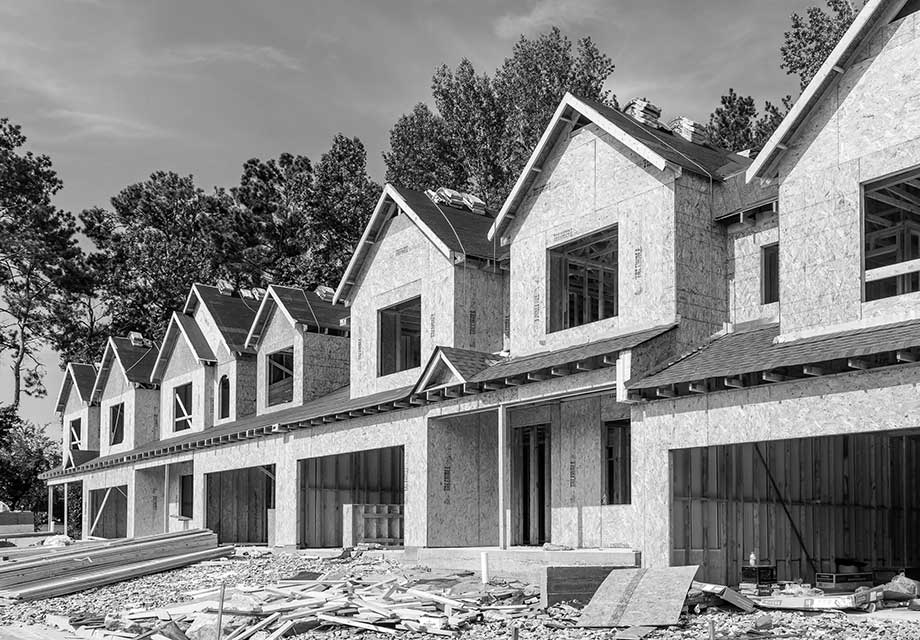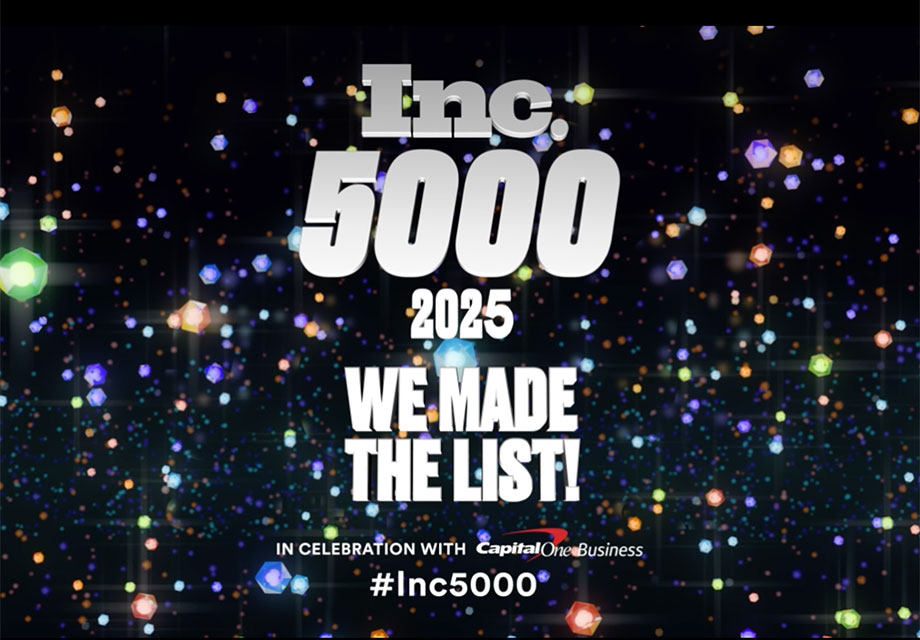Raising the Bar: How Cecilian and Mapbox Are Redefining Real Estate Maps

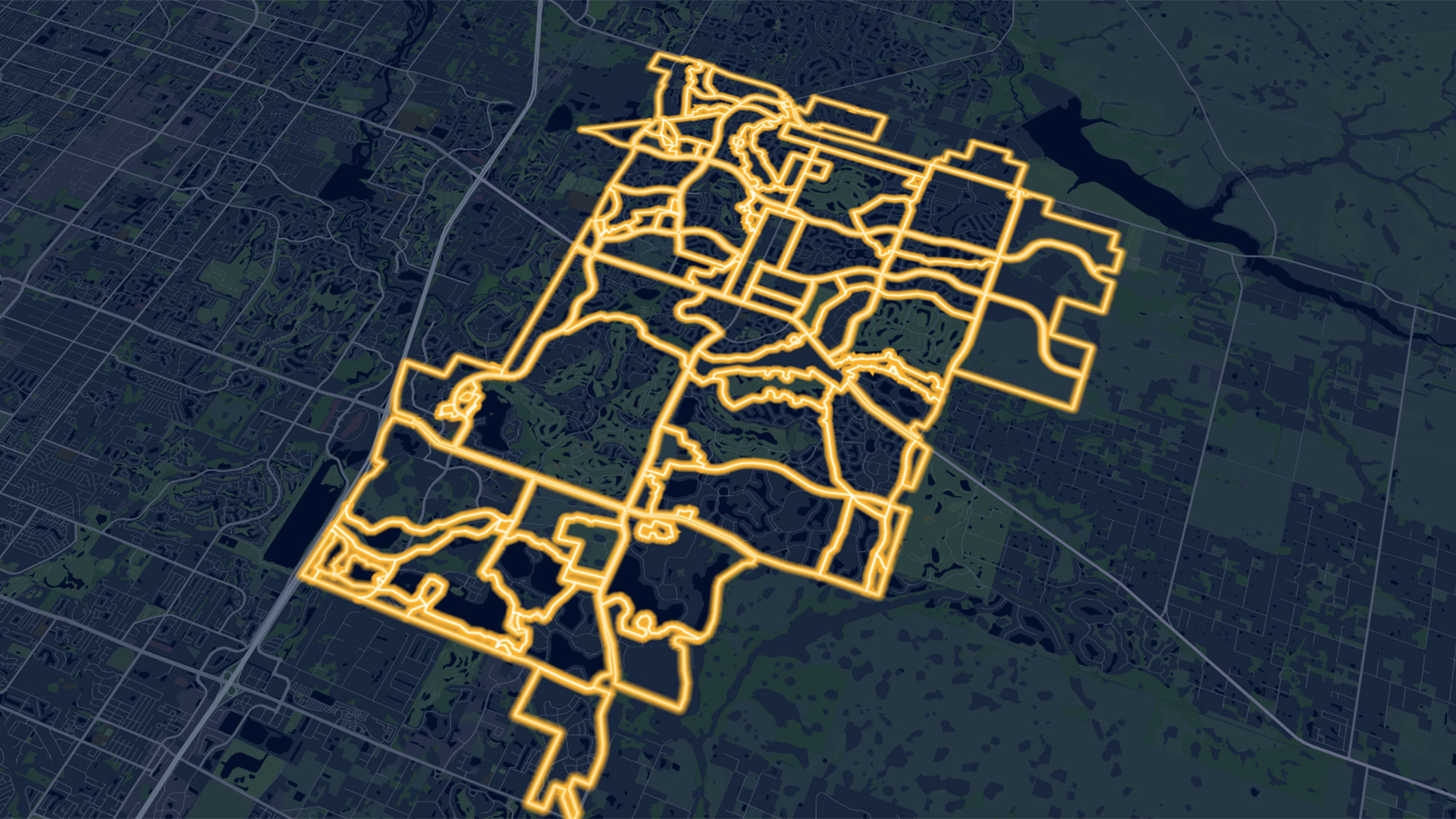
At BUILD with Mapbox this fall, the Cecilian team shared how we’re raising the bar for real estate mapping, bringing both order and beauty to vast amounts of data. Our co-founder and CPO, Phil Worland, and Director of Visual Services, Luke Decker, explained how we use Mapbox tools to design maps that feel bespoke and human, while scaling seamlessly across hundreds of new home communities.
[Psst...scroll down to watch the full presentation.]
From Plat Maps to Placemaking
Maps for master-planned communities are meant to help buyers navigate sprawling environments. These communities can encompass thousands of acres, featuring homes, schools, parks, shops, and trails. But, for decades, the industry has relied on static plats, PDFs, or even site plans taped to sales center walls.
Those maps weren’t built for today’s buyers. They’re flat, uninviting, and impossible to update in real time. Even mainstream platforms like Apple Maps or Google Maps can’t capture the nuances of a vibrant community, nor a community under development, with phases, amenities, and identity evolving by the month.
Today’s consumers want more than a geographic location. They want context. They want to know not only what’s for sale, but what it's like to live there.
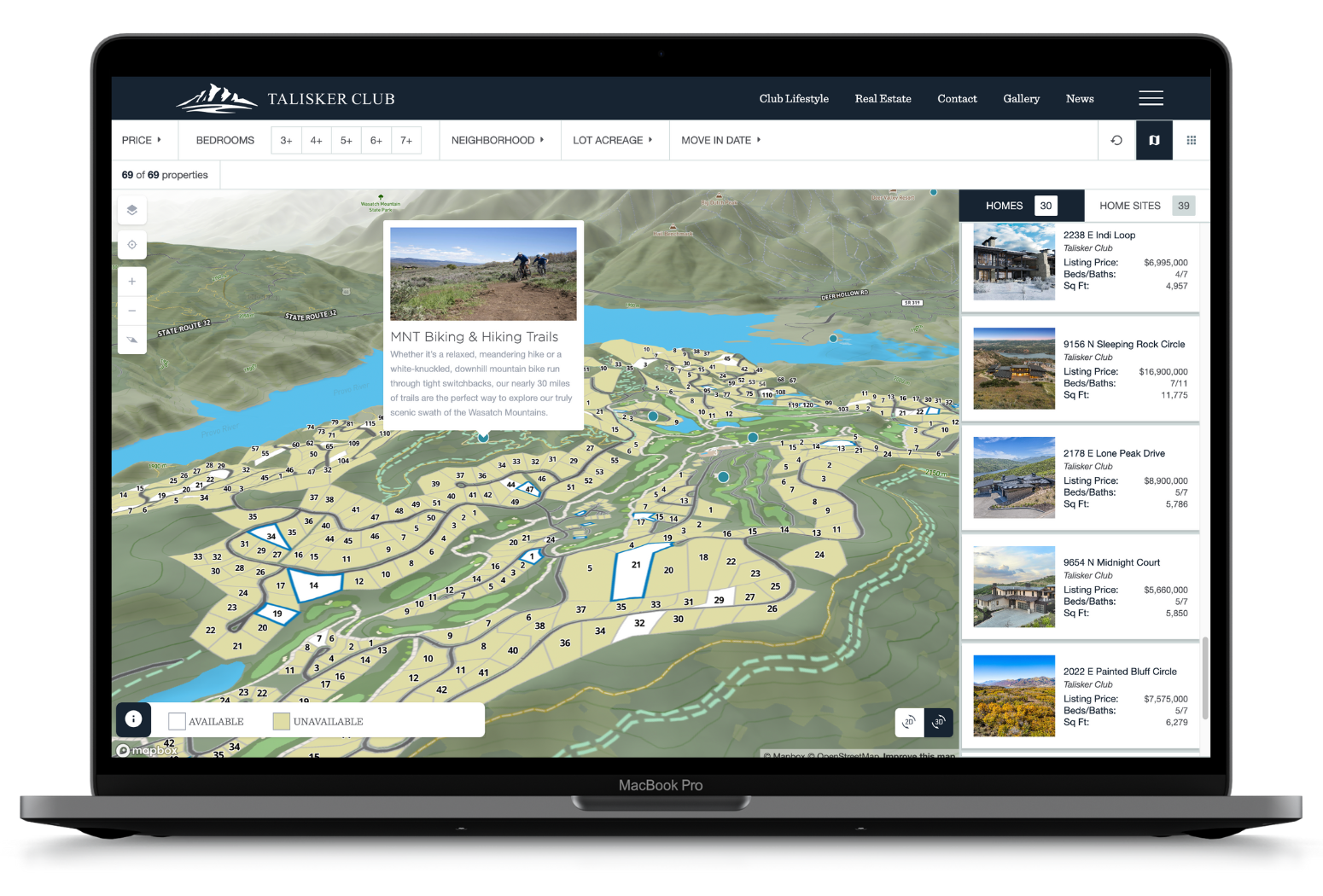
Why Mapbox is Our Foundation
We’ve been using Mapbox’s platform since Cecilian began because it provides us with a rare combination of design control and scalability.
- Mapbox Studio enables our design team to create bespoke, brand-aligned styles that reflect the unique identity of each community.
- Mapbox GL JS powers seamless performance across devices, from kiosks in welcome centers to smartphones in a buyer’s pocket.
- Custom tilesets and vector styling enable us to layer data dynamically, seamlessly blending everything from CAD drawings to aerial imagery into a single map.
Mapbox makes it possible to transform messy development data into an elegant and immersive buyer-ready experience.
The Mapping Stack: From Data to Discovery
Every map begins with a complex set of inputs, which may include CAD files, spreadsheets, aerial imagery, engineering drawings, and other relevant data. Our team processes these through GIS workflows and custom cleanup before publishing them as tilesets in Mapbox Studio.
The real artistry comes in how we style those tilesets. One of our breakthroughs has been developing map templates, base designs that combine Mapbox's flexibility with our own creativity. Using a system of design templates—Sol, Mesa, Dune, and Peak—we’ve built a library of map foundations that balance both performance and craft.
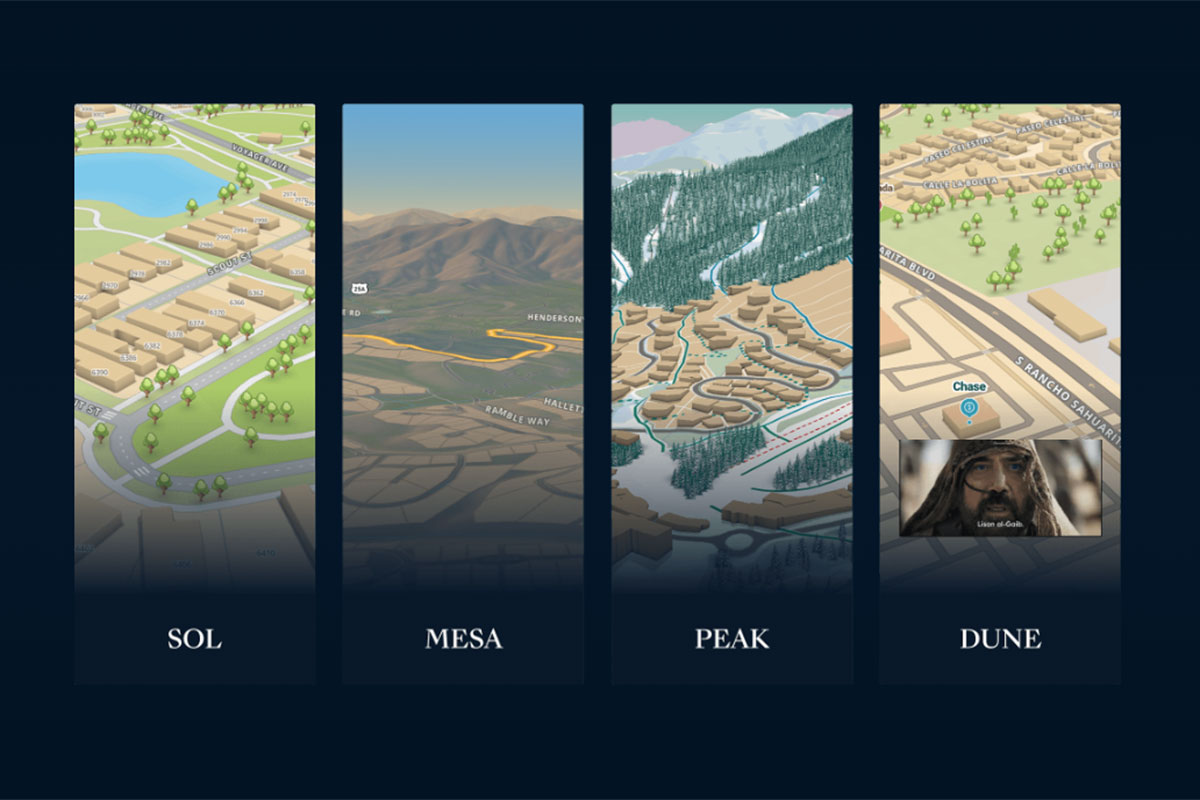
Each template reflects an attention to detail that goes beyond utility:
- Buildings with shadows and gradients to act as visual landmarks
- Amenities coded with colors and textures to reflect their real-world character
- Water features rendered with vector bathymetry for depth and realism
- Trees and shaded areas added for warmth and a stronger sense of place
These templates make our maps adaptable to different geographies (mountains, deserts, coasts, etc.), while ensuring each community feels like its own place, not a generic digital overlay.
The result: a map that functions like a system of record but feels like a window into a lifestyle.
Maps Built for Buyers, Powered for Business
Xplorer and The XO both integrate Mapbox-powered maps, giving homebuyers intuitive ways to explore communities and available homes. Each is designed to solve a different challenge for builders and developers.
Xplorer: A Map for Discovery
Xplorer focuses on storytelling and orientation. It helps prospects understand the full scope of a community, where the parks, schools, and amenities are, how things connect, and what makes the place unique.
Xplorer provides:
- Rich points of interest with photos, descriptions, and even Street View embeds
- Travel times for walking, biking, or driving, powered by Mapbox Navigation
- 3D pitch and terrain to showcase landscape and elevation details
Communities like Lakewood Ranch and Harvest by Hillwood Communities use Xplorer to help buyers fall in love with the idea of the place, not just the home.
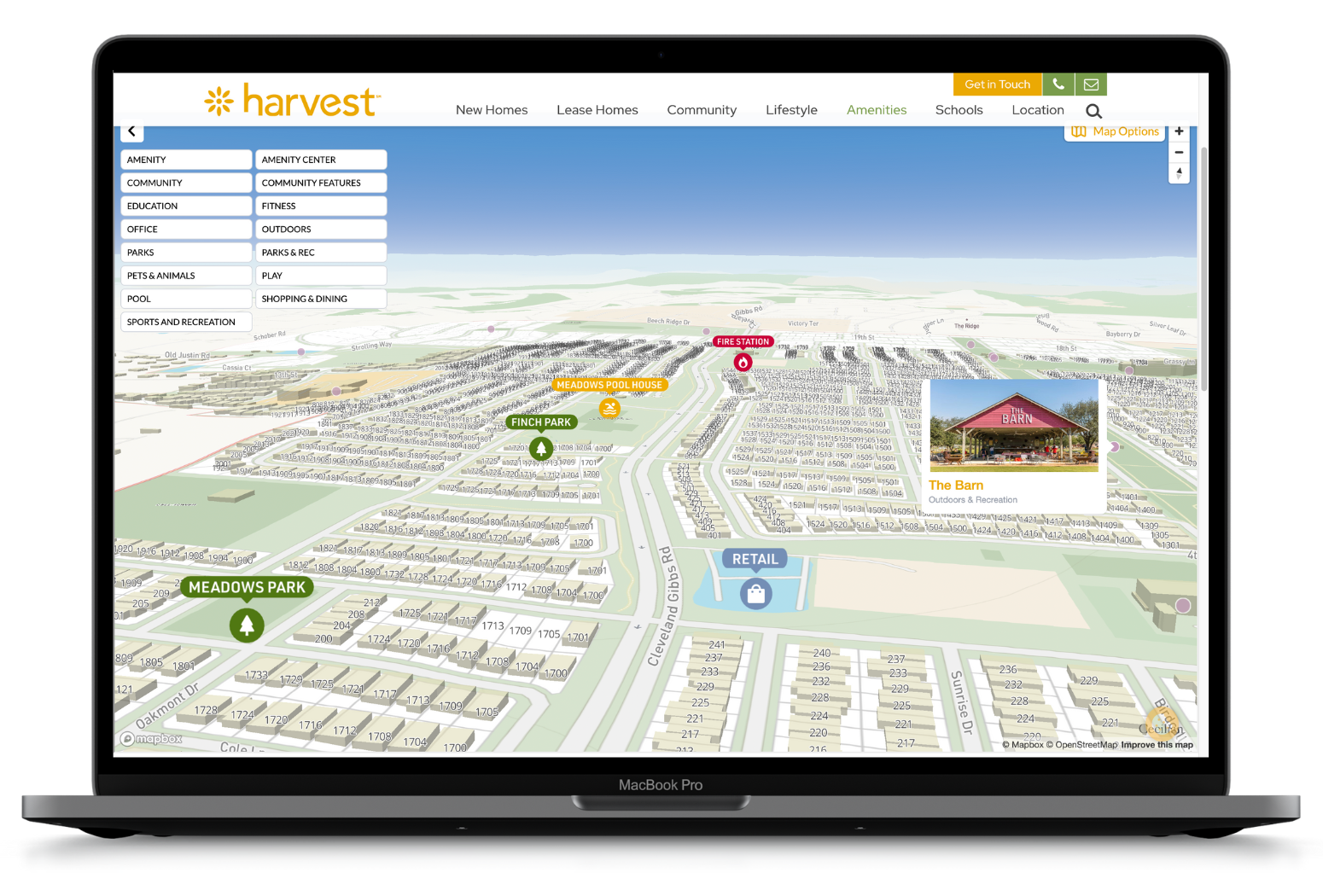
The XO: A Map for Decisions
The XO leans into inventory and decision-making. It’s the map buyers use when they’re ready to compare lots and homes, and the one builders and developers use to manage real-time data.
With The XO, buyers can:
- Filter lots by price, size, beds/baths, builder, and more
- See live availability and specs for lots and homes
- Explore photos, videos, and details for each home

For builders and developers, The XO doubles as a management tool, integrating directly with inventory feeds and automating architectural reviews to support faster sales.
Both types of maps go beyond navigation into business acceleration, powering both the front-end customer experience and the back-end sales engine.
Real Results for Sellers and Buyers
Our maps have driven measurable impact for communities throughout the US:
- 2–3x more leads from websites with interactive maps
- 3–5x higher conversion rates with pre-qualified leads
- 3+ minutes spent exploring maps, generating valuable behavioral data
Across 250,000+ acres and hundreds of thousands of lots, Mapbox enables us to deliver these outcomes at scale.
Closing Thought
Maps have always been about more than navigation. They’re about storytelling. We view every map as an opportunity to integrate design, data, and discovery into an experience that feels both personal and powerful.
As Phil shared during BUILD:
“We’re not trying to compete with Apple Maps. We’re creating bespoke experiences that capture each community’s uniqueness and guide buyers through it.”
That is the art of place.
CTA: Want to see how our maps can transform the way your community sells and tells its story? Let’s talk.

